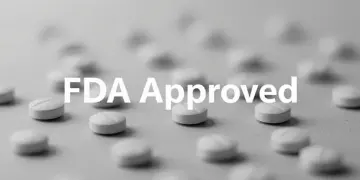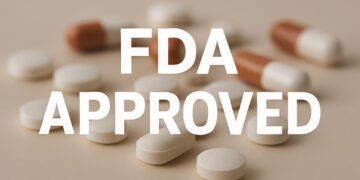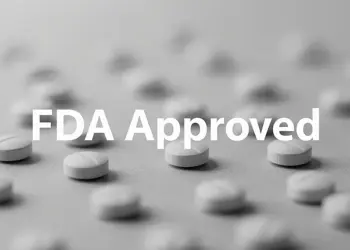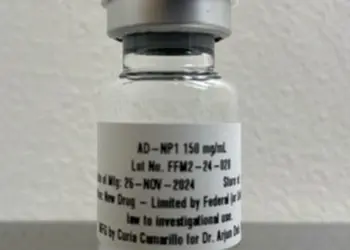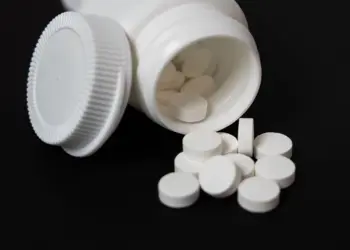Despite their track record of demonstrating significant therapeutic efficacy, biologics still face daunting challenges in their drug delivery. Biologics such as monoclonal antibodies (mAbs) and some vaccines are largely administered via injection or by infusion. These methods can often be a barrier to patient compliance. Less invasive forms of biologic drug delivery are in development, particularly oral administration and inhalation routes.
The current rapid rate of new drug target discoveries, coupled with increasingly effective engineering processes and a growing knowledge and understanding of how biologics are processed in the body have resulted in a higher number of biologics in clinical development and approved for the market. However, to date, formulations of biologics have mostly been designed for the parenteral route of administration. Because of this design, many biologics have short plasma half-lives which require frequent administration. The need to use needles on a frequent basis leads to sometimes painful administration and ultimately poor patient compliance.
Addressing the challenges
Frank Tagliaferri, PhD, chief scientific officer at Pace Life Sciences, emphasizes that biologics are typically larger molecules with more structural requirements as opposed to small-molecule therapeutics. The latter has long dominated the traditional oral route of delivery. Biologics also encounter more structural sensitivities that need to be overcome, Tagliaferri says.
These limitations often result in poor bioavailability for a variety of reasons, including degradation while in the alimentary tract, inability to overcome intestinal cell or mucosal barriers, and first-pass metabolism, which is avoided with the traditional injection routes, Tagliaferri explains. He further adds that, While there may be beneficial solutions to these hurdles individually, it is a significant challenge to overcome all of them with what will generally be a higher-cost biologic drug where extremely low bioavailability is not always economically feasible.
Today, alternative biologics drug delivery methods that have shown promise include inhaled biologics and oral solid biologics. Past-case scenarios include inhaled insulins. As Tagliaferri notes, the utility of inhaled biologics showed some promise during the development of both the Pfizer and Mankind inhaled insulin products, where numerous technical hurdles for lung delivery were overcome. But the lack of a commercial success to date demonstrates that issues such as ergonomics, patient-to-patient variability, and high cost of goods all contribute to public acceptance and the ultimate success of an alternate route.
Oral solid biologics, on the other hand, possess different, but just as significant, challenges compared to inhaled biologics, Tagliaferri says. Yet, there appears to have been more significant progress in oral solid biologics, he avers. The small-molecule development history has provided several delivery enhancements to oral delivery that have been successfully applied to a limited number of biologics. These include techniques such as enteric coating of capsules, additives to control release and residence time in the gut, [and] physical formulation techniques such as spray drying or lyophilization designed to help stabilize the molecules, Tagliaferri explains. When we combine these techniques with advancements in the use of additives to protect molecules or enhance delivery such as polymers, penetration enhancers, chelating agents, etc., there has been success as demonstrated in the delivery of some metabolic enzymes to the gut using spray dried proteins and enterically coated capsules.
Tagliaferri also observes that there does not seem to be a universal needle-fee path for all biologics. Rather, depending on the molecule, dose, and intended site of action, current alternative options such as inhaled, nasal, transdermal, buccal, oral, etc., would all have some utility in the market. Due to its convenience, compliance, and overall acceptance, however, the oral route will continue to be aggressively pursued and—with emphasis on future particle engineering or novel excipient advancements—may eventually be achieved, he says.
Where are we now?
At a 2022 Oxford Global conference on formulation and delivery, speakers discussed how the field of inhaled biologics had reached an interesting phase of development. Speakers noted how scientists are currently working on optimizing the process by focusing on methods that reduce the necessary dose needed to be effective and delivering the biologic to the site of action. They point to one example in which researchers are working toward more specific delivery to target organs in the body, such as cancer cells in the lungs, rather than the conventional treatment which targets the whole body via injection. However, developing an inhaled biologics formulation for this case scenario, and others, requires overcoming the issues inherent with creating stable and safe formulations for biologics.
Much work is currently going into developing biologics formulations that can be inhaled to deliver therapy locally to the lungs for treating respiratory diseases, according to speakers at the 2022 conference. The work has led to innovations that include antisense oligonucleotides, messenger RNA (mRNA), and lipid nanoparticles (LNPs), the speakers noted. The speakers also noted that the recent interest in developing inhaled and nasal biologics was partly spurred by the urgency seen during the development of COVID-19 vaccines and treatments for other viral pathogens.
Meanwhile, more progress was made on oral vaccines with the completion in 2023 of a Phase I clinical trial for an oral vaccine platform known as QYNDR, which is a self-administered drinkable vaccine, reportedly the first of its kind, according to US Specialty Formulations, a manufacturer of sterile injectable, topical, and specialty pharmaceuticals.
QYNDR, a next-generation protein-based oral vaccine (mucosal vaccine), was developed as a means to address challenges seen with current COVID-19 vaccines. In the results from the Phase I clinical trial, the vaccine demonstrated longevity and cross-variant protection from multiple COVID-19 strains. The study may have also possibly identified a correlation of protection against the virus and other strains, which the company will be further investigating in a Phase II clinical trial.
The Phase I clinical data showed strong evidence that this oral platform and vaccine is a revolutionary industry disruptor and will become the preferred method of vaccination in the future, said Kyle Flanigan, CEO of USSF, in a press release issued at the time that the Phase I trial was completed. As they proceed into Phase II and III, we are confident this next-generation vaccine will be more effective than other mucosal vaccines in current development and testing.



